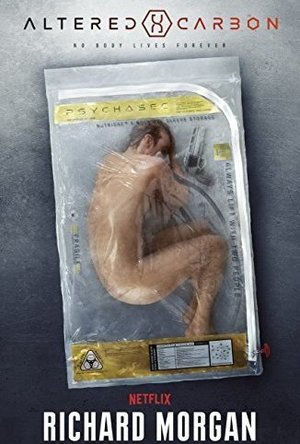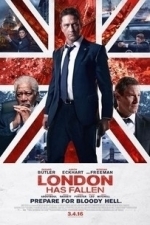
iTriage - Health, Doctor, and Symptoms search
Health & Fitness and Medical
App
iTriage is a free app that puts you at the center of your healthcare—anywhere, anytime. Search for...

Bajaj Finserv Wallet
Finance and Shopping
App
Bajaj Finserv Wallet powered by Mobikwik. Fastest Online Recharges, No Cost EMI, offers on LED,...
ScoreStream Sports Scores
Sports and Social Networking
App
ScoreStream allows you to share scores, photos, videos and chat with fans all over the world. This...

TrafficCamNZ
Navigation and Travel
App
TrafficCamNZ displays internet accessible pictures of Traffic Cameras all over the world. You could...

Outdoors GPS – Offline OS Maps
Navigation and Travel
App
Rediscover the OUTDOORS this SUMMER with the #1 Outdoors Navigation App for iOS ** OutDoorsGPS -...
Ross (3284 KP) rated Altered Carbon in Books
Jun 28, 2018
Sadly, none of this was explored very well. There was a very clichéd, basic detective story overlaid on to this world. A billionaire claims he was murdered, but the authorities ruled his death as a suicide. This on the surface (someone being a witness for their own murder!) filled me with excitement for what lay ahead. However this quickly ebbed away as the story changed into a detective (Takeshi Kovacs - one of the most bland, one dimensional characters ever created) wandering around Earth, where he has never been, and annoying drug dealers and pimps.
There then follows a great deal of nonsense sex scenes, utterly drivel narrative (Morgan seems to think he has to take a whole page to describe each new location and has some very obscure turns of phrase - I actually speed-read the last 150 pages out of pure frustration with how long and boring the experience was - everything is contained in the dialogue so I recommend just reading that and skimming any action scenes), sci-fi jargon which means nothing to the reader, and very little plot development. In fact, pretty much the whole plot is outlined, by the perpetrator, in one chapter near the end - the "detective" didn't solve the case, he just worked out someone was involved and they filled in the details for him. Utterly clumsy storytelling.
Some people might enjoy taking a long time to read this, the futuristic setting, the overly-described settings, trying to work out what the sci-fi mumbo jumbo means. I am not one of those people. The world-building was there, but was under-used. The plot was basic and only really relevant in the first and last 50 pages. The characters were all forgettable, one-dimensional and clichéd (so much so that I frequently had to search back to find out who the person referred to was and why I should care).
That Takeshi Kovacs survived and went on to star in two follow-up books was a depressing revelation for me.
Gareth von Kallenbach (980 KP) rated Mario + Rabbids Kingdom Battle in Video Games
Jun 19, 2019
Mario vs. Rabbids: Kingdom Battle blends the iconic Nintendo characters with the Ubisoft Rabbids in a new turn based adventure that fans will love.
Mario, Yoshi, Luigi, and others blend with the mischievous Rabbids after a hysterical accident combines the two franchises.
Using a guide, players will move across a map, collecting coins as they go which can be used to upgrade your gear at various times.
When players enter certain arenas, the game becomes a turn based tactical combat game. Think X-Com but more family friendly and you begin to understand the fun and challenges that await them.
A typical round involves players moving to a point on the field, taking cover, and firing an attack shot at an enemy. Players may also opt to use a defensive skill when available or charge in for a close-quarters attack.
Should players complete the round with at least one of their three players still standing, they can move onto a new area and fight a new set of challenges.
I was doing very well until the first Mid-Boss who along with his minions presented a large challenge. The game gave me the option to play in an easier mode, but that did not seem to matter much as the enemies used travel tubes, exploding boxes, and other tactics to dominate.
Being able to upgrade your weapons is a big help as often the extra amount of damage you can deal an enemy is the key to winning a battle or failing miserably.
The game offers a co-op mode for players looking to play with another player and it is an easy game to play, but one that is very difficult to master.
The Game did very well at E3 when it was announced and won several awards which are well-deserved as after several days of playing the game, I am not bored with it at all and still keep coming back to it again and again.
This is a big deal for me as I often become bored with Nintendo games after a few days as I often find the dated graphics and gameplay difficult to hold my attention for long compared to other options that are out there. This time, I found a game that I love and enjoy the challenge and whimsical blend of styles which makes this one the first real reason to own a Nintendo Switch as I have found it far more enjoyable than any other title currently available for the system, Zelda included.
http://sknr.net/2017/08/28/mario-vs-rabbids-kingdom-battle/
Gareth von Kallenbach (980 KP) rated London Has Fallen (2016) in Movies
Jun 19, 2019
Banning decides to shake things up a bit and deviate from their posted itinerary which keeps their exact travel schedule known only to himself and a couple others. Things seem to be going as planned when a series of devastating attacks erupt all over London. Not knowing who can be trusted and where the enemy will strike next, Banning and the President are forced to battle an enemy that seems to be everywhere and always anticipating their plans as they attempt to reach safety.
from an action film. There are plenty of solid car chases, firefights, explosions, intrigue, and of course an abundance of bad guys for the hero to dispatch. The film works well as Banning is not afraid to let his emotions show but is also steadfast in his duty to protect the President no matter the cost. Banning is not an unstoppable killing machine or the one man army that is so common amongst action films as he is a dangerous and skilled person who is still able to admit he cannot do this alone and seeks help when it is needed.
Eckhart is given more to do this time out than simply play hostage and it is great to see him getting down and dirty at times when the action heats up. The film does take some moments to indulge in what many might call flag-waving jingoism with its over-the-top patriotic message which considering Butler’s Scottish heritage does seem a bit out of place at times. That being said, “London Has Fallen”, is a rare sequel that is as good if not better than the original and Director Babak Najafi keeps the film moving at a breakneck pace yet keeps the film a character driven story that never lets up once the action revs up.
Here is hoping that Banner and Asher have another outing in the near future as “London Has Fallen” is a real surprise and a great thrill ride from start to finish.
http://sknr.net/2016/03/04/london-has-fallen/

Tutoring: English live lesson
Education and Book
App
Tutoring, awards winning application for online language private lessons! Tutoring provides a...




